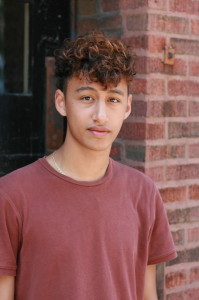 “The People’s Temple, by Leigh Fondakowski.” Our director held a script in the air. “It is a play about Jim Jones, the rise-and-fall of his church, and the Jonestown tragedy.”
“The People’s Temple, by Leigh Fondakowski.” Our director held a script in the air. “It is a play about Jim Jones, the rise-and-fall of his church, and the Jonestown tragedy.”
I looked around at my fellow actors. Not many of them had ever heard of Jonestown at all. I knew only what my father had once told me when I was young, that it was a “religious cult, led by a very sick man who forced his followers to commit suicide. Nine hundred and eighteen people were killed.” My father is one to exaggerate numbers, as am I, but upon research I found that what he said – about the amount of deaths – was true. On November 18th, 1978, nine hundred and eighteen people died in Guyana, South America, almost all by cyanide poisoning. I knew this, but the majority of my peers did not.
When we arrived in San Francisco to conduct research for our performance, I didn’t know what to expect. We spent the entirety of our first day in the California Historical Society, sifting through photographs, letters, and various documents related to Jonestown and Peoples Temple. What really got me were the beautiful pictures of the black and white children, growing up together in the incredible town which the people built in Guyana. Seeing these children, integrated, and not impoverished, growing up in the jungle, really saddened me, because it became all the more apparent that what was being created was not at all a dark concept: On the contrary, it was a socialist community, free of racism, poverty, and capitalism.
We were met by Laura Johnston Kohl, who spoke very openly about why she joined the church and what her experiences within it were like. Sitting in the room with her, I remembered a negative experience I had had with a teacher at school who had passed judgment very quickly about Jonestown. “Anyone who would join a suicide cult is clearly not sane,” she said. I wished that my teacher – and anyone who thought like her – could have heard what Laura was saying, because we were all reminded that no matter what we go through, whatever choices we make, we are all human. Most importantly, at least as far as my experience with my teacher was concerned, being able to have a human conversation – to look someone right in their eyes as they share their story with you – makes it impossible to make such a snap judgment about them. And each survivor we met reminded me of this.
I realized that most people my age have never even heard of Peoples Temple or Jonestown at all. Some people older than me, even those who were alive at the time, know far less than I do. It is not something even mentioned in our American history classes. I found this extremely frustrating. The fact that it is – to a certain degree – swept under the rug infuriated me. As I listened to each survivor, I wished wholeheartedly that more people could sit in the room and listen to these beautiful and important stories, and see the people behind the controversy. Whether it was Eugene Smith’s contagious smile, Garry Lambrev’s philosophical tangents, Tim Carter’s profound political opinions, or Stephan Jones’ humanizing perspective on his father, all I felt was a wanting for the masses to know.
Finally, I realized that in doing the play, The People’s Temple, we were doing just that. We were being given an opportunity to share these stories, to speak for the living, and also for those who cannot. This was no longer a play. It was a message. Having this opportunity, to not only listen but to share, has helped me grow as an artist and more importantly as a human being. I will forever be grateful to all of those who shared their stories, because it is so important that they are not forgotten.
(Jo-Jo Brown was a Junior Ensemble Member on the American Theater Company, and a senior at the Chicago High School for the Performing Arts. He plans to study acting in college next year. Jo-Jo portrayed Garry Lambrev and Vern Gosney in The People’s Temple.)